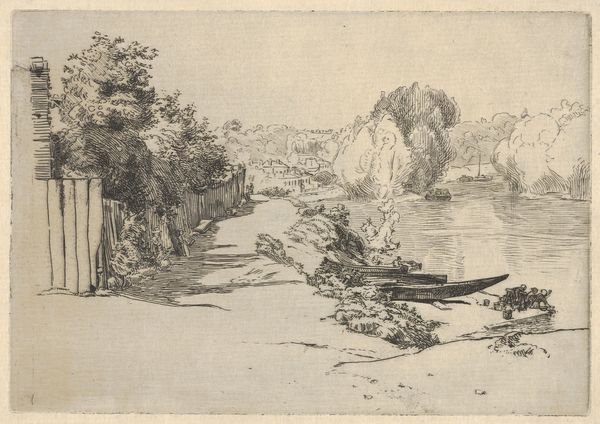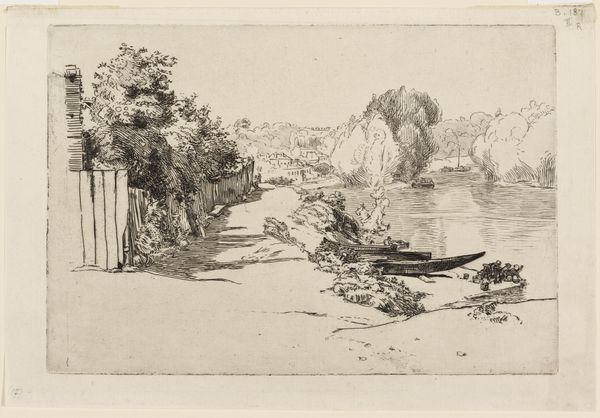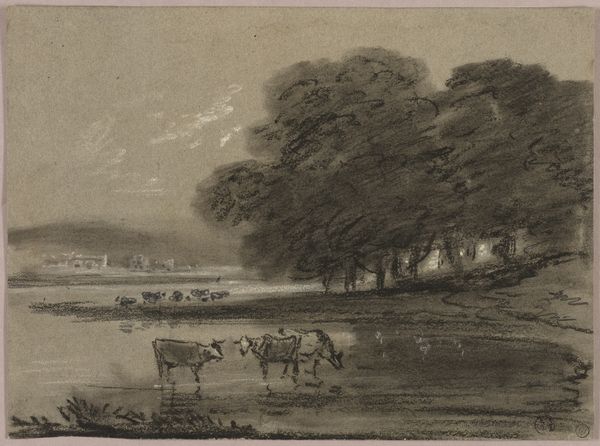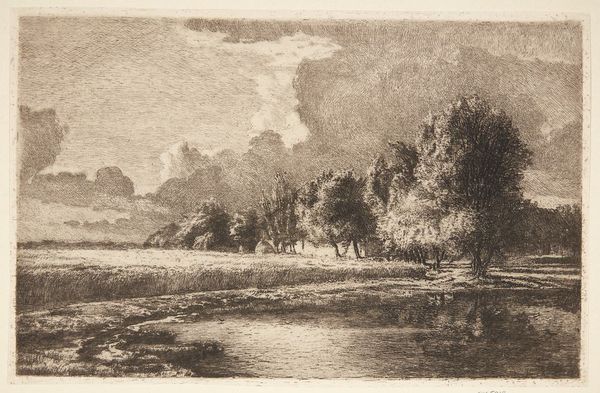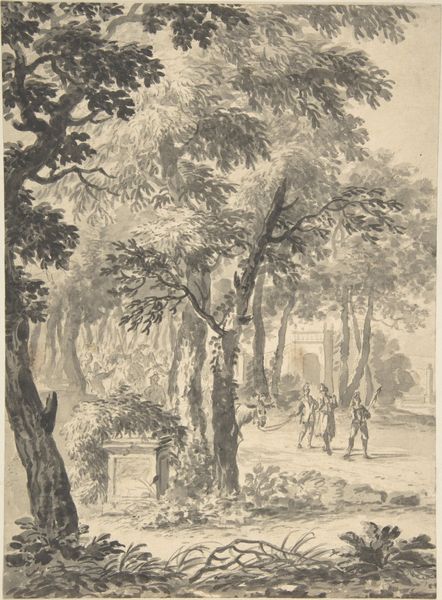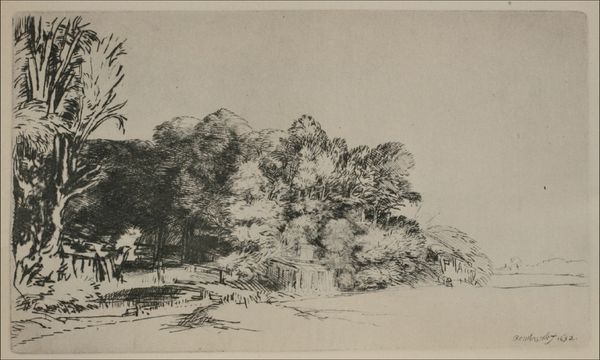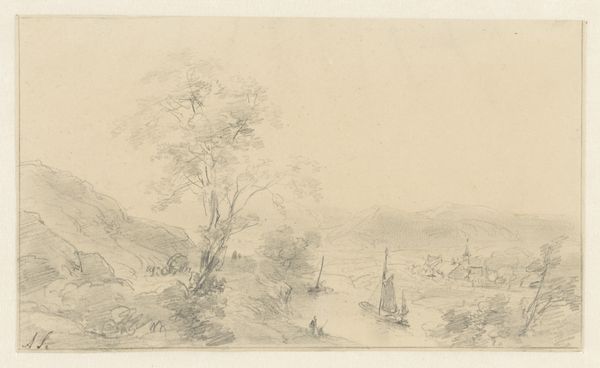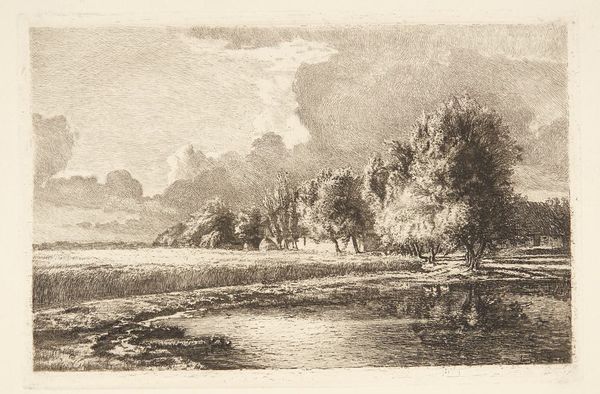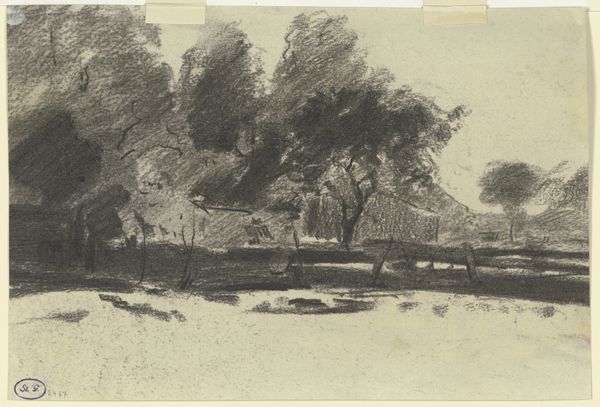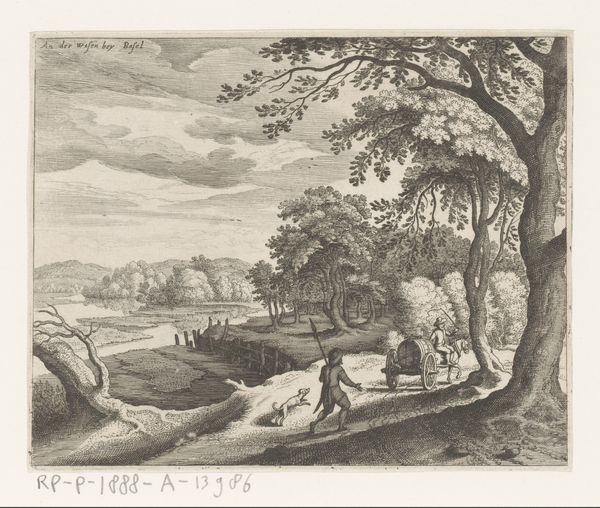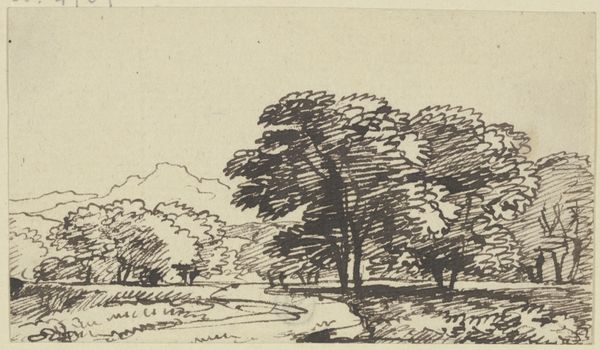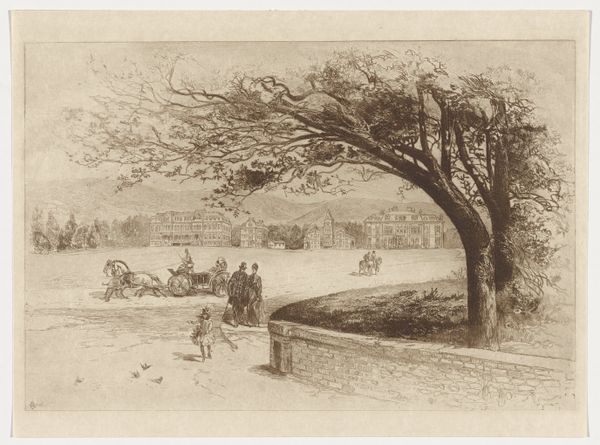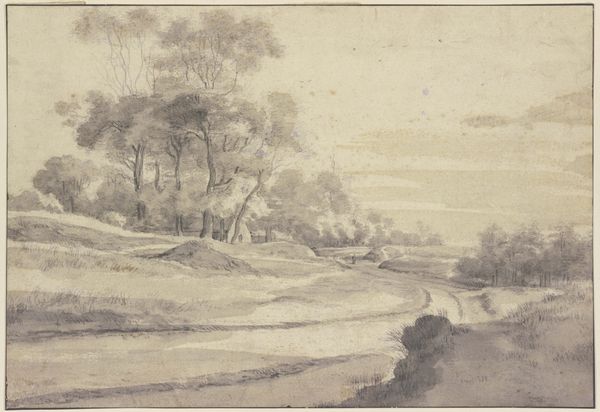
drawing, ink
#
drawing
#
baroque
#
landscape
#
ink
#
pencil drawing
Copyright: Public Domain
Curator: I’m struck by the overall calming effect, wouldn't you say? The soft, diffused light, the tranquil river… there’s a dreamlike quality to it. Editor: Absolutely. This is a drawing titled “Fluss mit waldigem Ufer, rechts ein Wagen und Reiter,” which roughly translates to “River with wooded banks, a wagon and rider on the right,” made with ink on paper, by Roelant Roghman. It is part of the Städel Museum collection. Roghman was working in the middle of the seventeenth century. Curator: Given the period, you can really feel the echoes of the Dutch landscape tradition, albeit in a more immediate form. The social role of these images must have been substantial as the patrons demanded an idyllic rural context to define their aspirations. Editor: Yes, and formally, it is about lines—look at the repetitive calligraphic brushstrokes building volume in the trees, a staccato rhythm against the serene washes of the water and sky. Curator: The way he depicts figures, almost as secondary elements embedded in this vastness, highlights the Baroque ideals that emphasized man's connection to the wider landscape. They become part of a wider narrative of society, with landscape almost personified. Editor: Notice too how the limited tonal range forces the viewer's eye to actively complete the image, engaging our imagination to interpret depth. The economy of detail enhances the poetic impact—one or two ink washes, simple. Curator: And I think that's precisely what is compelling here—this is more than an image of the land. It suggests cultural pride, prosperity, all encoded in a format understandable to those elite individuals. The symbolism might have served to justify, even aggrandize, their position in society through property and stewardship. Editor: Quite. Looking at it through a different perspective, it is not just social values, but it is really also about Roghman experimenting with mark-making, playing with darks and lights within an economical monochrome palette. We observe visual information compressed to its minimal representation—his technique provides us clues to a certain way of seeing that is almost fleeting. Curator: In short, this drawing isn’t merely pretty; it reflects complex layers of society. Editor: Indeed. And while capturing a scene, it prompts us to explore its intrinsic artistic qualities.
Comments
No comments
Be the first to comment and join the conversation on the ultimate creative platform.
